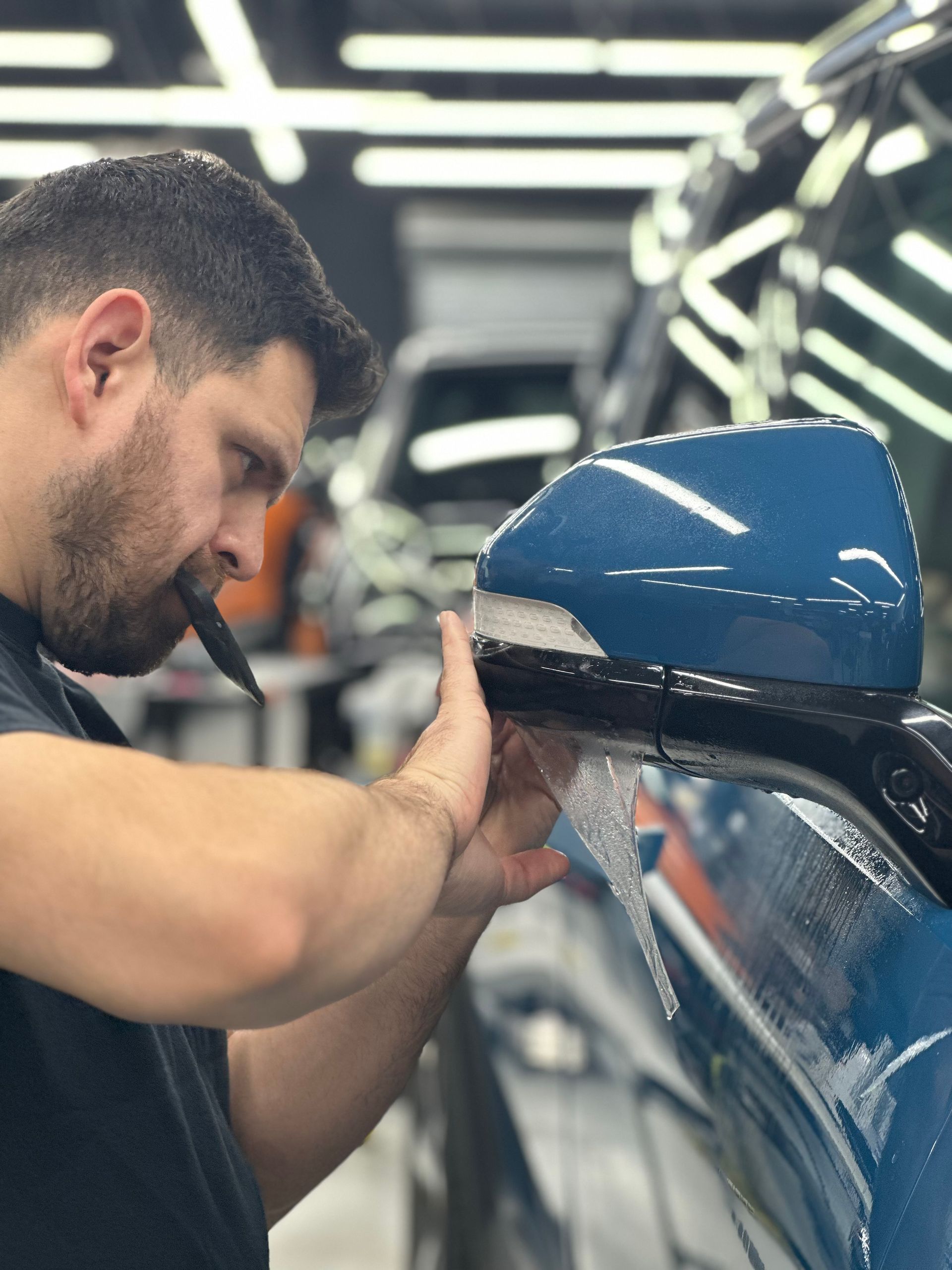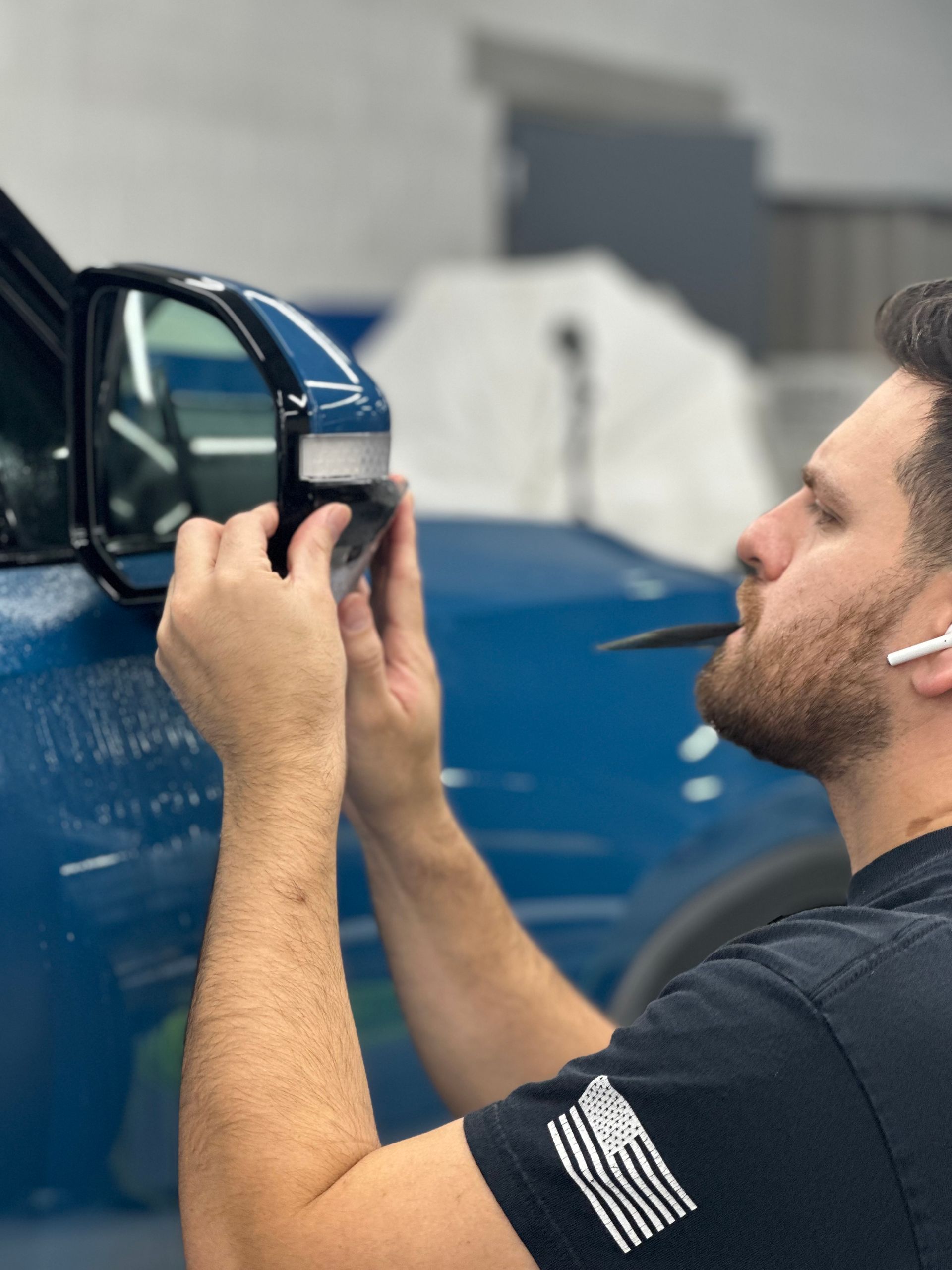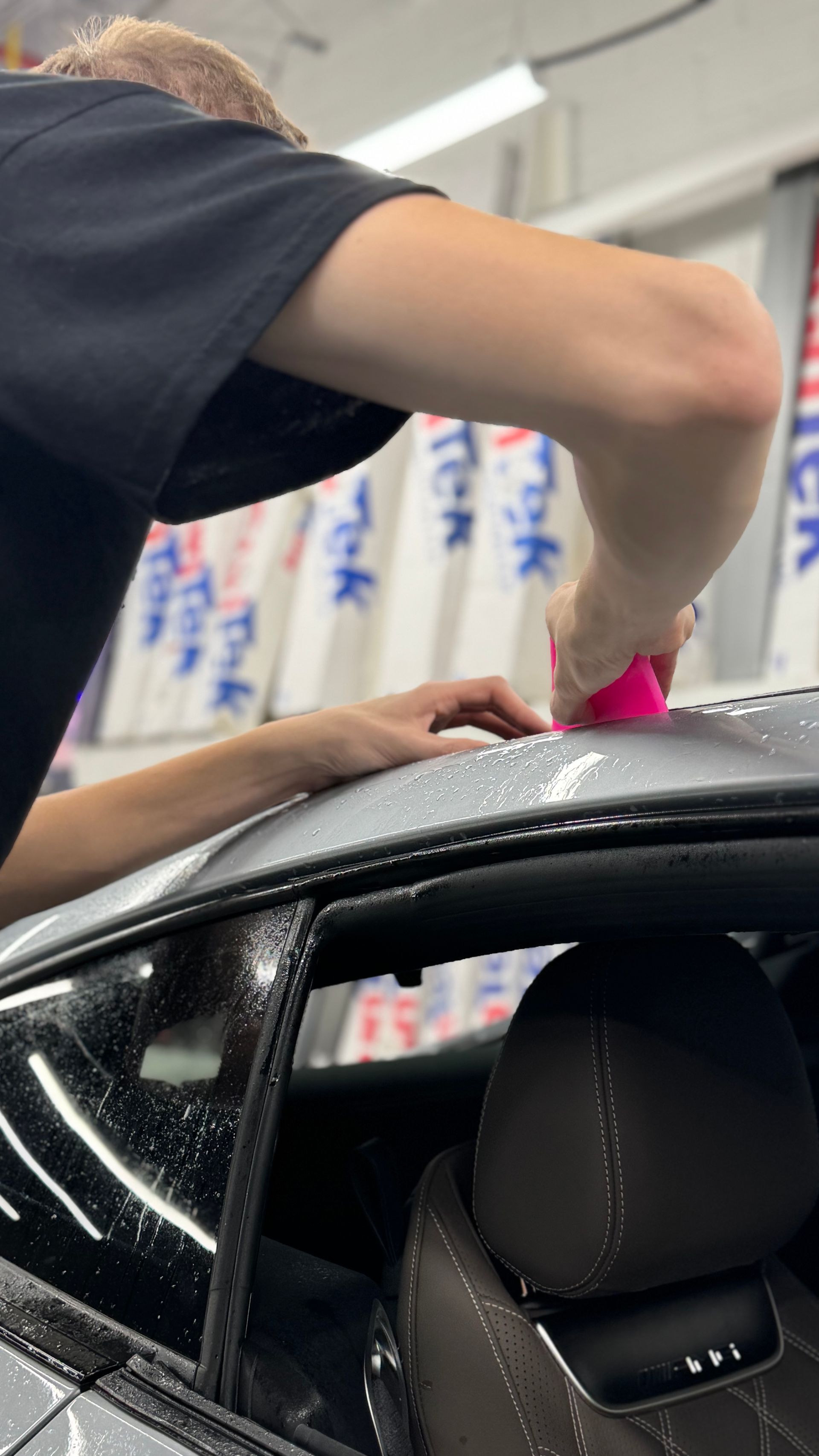PPF Aftercare: Essential Do's and Don'ts for Long-Term Protection
GET A FREE ESTIMATEWhen you invest in paint protection film for your vehicle, you're not just adding an extra layer of defense; you're safeguarding your ride’s appearance and value against scratches, stains, and weather wear. However, many car owners wonder how to ensure their film continues to work effectively over time. The truth is that proper aftercare is as important as the initial installation. Just like you wouldn't neglect regular oil changes for your car’s engine, your PPF also needs attention to stay in good shape. So, let’s dive into the essential do's and don'ts of PPF aftercare to keep your vehicle looking sharp for years to come.
To ensure long-term protection of your paint protection film, you should regularly inspect it for wear, wash it every 1-2 weeks with a pH-neutral shampoo, and promptly remove contaminants like bird droppings. Conversely, avoid automated car washes, aggressive scrubbing, and using harsh chemicals that could damage the film.
Best Practices and Common Pitfalls to Avoid
Proper aftercare is key to maintaining the integrity and appearance of your paint protection film, ensuring it continues to protect your vehicle’s paint effectively over time. To keep your PPF in top condition, it's important to follow a few simple dos and don'ts.
- Essential Aftercare Practices: Regularly inspect your PPF every few weeks to catch any wear and tear early, which can help avoid costly repairs. Look for signs like lifted edges or bubbles under the film that may indicate damage. For washing, always use a pH-neutral shampoo and wash your car every 1-2 weeks to prevent dirt buildup. Avoid harsh scrubbing, as this could damage the film. It's crucial to remove contaminants like bird droppings or tree sap as soon as possible to avoid permanent staining. A microfiber towel and spray detailer are ideal tools for this task. When washing, use the two-bucket method: one for soapy water and one for rinsing to prevent dirt from scratching the PPF. Rinse with low-pressure water sources like a garden hose, and pre-soak your vehicle to loosen dirt before washing. Always choose pH-neutral shampoos (with a pH level between 6 and 8) and avoid citrus-based or acidic cleaners, which can damage the PPF!
- Common Mistakes to Avoid: Avoid automated car washes with stiff brushes, as they can peel or scratch your PPF. Instead, opt for hand washing. Never scrub aggressively, as excessive force can damage the protective layer. After installation, refrain from driving for at least 48 hours to allow the PPF to properly adhere without interference from wind or debris. Steer clear of harsh chemicals like acetone or ammonia, as they can weaken the PPF. Only use products specifically formulated for PPF care and always avoid abrasive pads or tools that could harm the film.
By following these aftercare tips, you can ensure that your paint protection film continues to shield your vehicle, keeping it looking pristine for years to come.
Immediate Aftercare Steps
The first step in caring for your newly installed paint protection film involves resisting the urge to give your car a thorough wash. It may seem counterintuitive, but it’s essential to hold off on washing your vehicle for at least 48 hours following installation. During this critical window, the adhesive needs time to cure properly. Using water or cleaning products too soon can disrupt this curing process, leaving you with a film that lifts or develops unsightly bubbles. So, while it might feel tempting to rinse away the residue from installation, patience is key here. Once you've allowed the film to set, consider your parking options to aid in effective curing.
Ideally, you'll want to park your vehicle indoors or at least in a shaded area during those critical first 48 hours. Sunlight can significantly impact how well the adhesive bonds with the surface of your car. Excessive heat can cause the adhesive to become tacky, which might lead to shifting and improper adhesion. Similarly, parking under trees may expose your vehicle to sap or direct debris falling onto the freshly applied film. Keeping your car in a safe and controlled environment ensures that your PPF can do its job without interference from nature's elements. As you celebrate having a freshly protected vehicle, remember that there are additional steps you should take in those early stages.
One often overlooked factor is managing temperature fluctuations around your vehicle immediately after installation. If possible, avoid exposing your car to extreme temperatures—below 32°F or above 100°F—for at least two weeks after applying PPF. This helps maintain the integrity of the adhesive and prevents any potential mishaps like peeling or bubbling due to thermal stress. Additionally, keeping your vehicle out of direct sunlight for about three days post-installation creates an optimal bonding scenario while also protecting the film's clarity.
Many experts agree that taking time for these immediate aftercare steps can ultimately make a significant difference in preserving both the appearance and function of your PPF. All these precautions emphasize one vital aspect: patience during this initial period pays off in long-term protection for your car's exterior. Finally, it’s important to inspect the film for any imperfections within that first week. Early detection is crucial; if you notice any bubbles or oddities developing beneath the surface of the film, addressing them promptly with professional help could save potential headaches down the road.
Long-Term Maintenance Tips
To ensure the longevity of your PPF, a proactive maintenance routine is crucial, and it starts with immediate contaminant removal. When it comes to common nuisances like bird droppings or tree sap, you should act quickly. These contaminants can create unsightly stains and even degrade the film’s quality over time. The best method is to keep a spray detailer handy; simply spritz the affected area and gently wipe away residues with a soft microfiber towel. This quick action can save you from needing costly repairs down the road and keep your vehicle looking sharp.
Now that we've addressed immediate care, let’s talk about annual upkeep. One of the most effective ways to prolong your PPF is through annual ceramic coating applications. Applying a ceramic coating creates an additional shield against harsh UV rays, which can dull the finish over time. This protective layer helps maintain the clarity and gloss of the film while making it easier to clean.
Proper Washing Techniques
Implementing effective washing techniques can significantly impact your PPF's lifespan. It’s recommended to use the two-bucket wash method every 1-2 weeks—one bucket for soapy water and another for rinsing—to prevent dirt from scratching the film. Always opt for a pH-neutral shampoo that will gently clean without damaging the protective qualities of the PPF. Light pressure is essential; avoid high-pressure water sources as they may lift the edges of the film.
Remember, gentle handwashing is preferable. Use soft microfiber mitts for washing and drying; these materials minimize scratches while ensuring that your vehicle maintains its glossy appearance. Following up on this point, always be mindful to check for any signs of wear or damage during regular cleaning sessions. Regular inspections every few months can help identify early signs of trouble. Pay special attention to lifted edges or bubbles under the film, as catching these issues early can save you a lot of hassle and costs later on.
Key Benefits of PPF for Vehicle Protection
Paint protection film is a clear, durable shield that helps preserve your vehicle’s paint from scratches, chips, and environmental damage. Whether you have a sports car or a family vehicle, PPF keeps your car looking new while protecting its value. Let’s explore the key benefits of PPF and why it’s an essential investment for your vehicle.
- Enhanced Protection: PPF provides a robust shield for your vehicle’s paint, safeguarding it from a variety of hazards. It acts as a barrier against scratches, rock chips, and damage caused by environmental contaminants such as bird droppings, tree sap, road salt, and road debris. With PPF, your vehicle’s paint is protected from these everyday threats, ensuring that the surface remains smooth and flawless over time.
- Preserves Paint Appearance: The protective layer of PPF helps maintain the original color and luster of your car’s paintwork. Exposure to the sun’s UV rays can cause paint to fade, but PPF offers UV resistance, preventing oxidation and discoloration. This keeps your vehicle looking new, even after years of use, by maintaining its shine and vibrancy.
- Increases Resale Value: A car with well-preserved paint is more attractive to potential buyers, which can increase its resale value. Since PPF helps maintain the quality of the paint, the car’s exterior looks newer for longer. Buyers often prefer vehicles with clear, protected paint, as it suggests the car has been well cared for, and they won’t have to worry about repainting or touch-ups.
- Long-Term Durability: PPF is designed to last for many years, offering long-lasting protection for your vehicle. Unlike traditional waxing or sealants that require frequent reapplication, PPF is a one-time investment that requires minimal maintenance. It stands up to various weather conditions, from harsh sun exposure to extreme cold, making it a reliable option for year-round protection.
- Self-Healing Properties: Many high-quality PPFs come with self-healing technology, which means minor scratches and swirl marks caused by washing or light abrasions will disappear over time. This process occurs when heat (such as sunlight or warm water) triggers the film’s molecular structure to reform, making your vehicle’s surface look smooth and free from imperfections. This feature ensures that your vehicle maintains a pristine finish with little effort.
- Low Maintenance: Once installed, PPF requires minimal upkeep. You don’t need to worry about frequent waxing or polishing to maintain its protective properties. Simply follow basic cleaning routines, and the film will continue to safeguard the paint. This makes it an ideal choice for vehicle owners who want protection without the hassle of constant maintenance.
With its exceptional protective qualities, paint protection film offers more than just a shield for your vehicle’s paint — it’s a long-term investment in both the appearance and value of your car. By keeping your vehicle safe from scratches, fading, and environmental damage, PPF ensures your car maintains its sleek look and retains its market worth.
Why Consistent PPF Care Is Worth the Effort
By following aftercare and maintenance tips, you ensure your paint protection film (PPF) continues to deliver maximum protection for your vehicle’s paintwork. Regular washing with the right tools and pH-neutral products prevents dirt and contaminants from building up and breaking down the film. Frequent inspections allow you to catch early signs of lifting, bubbling, or damage before they turn into costly repairs. Annual sealant applications further extend the life of your PPF by adding a layer of UV and chemical resistance. Over time, this consistent care doesn’t just protect your vehicle—it preserves its showroom shine, maintains its resale value, and saves you money on paint correction and repairs. Simply put, taking care of your PPF means your car continues to look newer, longer!
Best Paint Protection Film Installers in Hawthorne, NJ
Protect your vehicle’s finish with the highest quality
paint protection film services in Hawthorne, NJ, from Automotive Specialty Wraps. Our expert team ensures your car stays looking pristine and shields against scratches, chips, and the harsh elements. With our advanced PPF technology, your vehicle will maintain its shine for years to come. Contact us today to schedule your consultation and experience the difference in vehicle protection!






